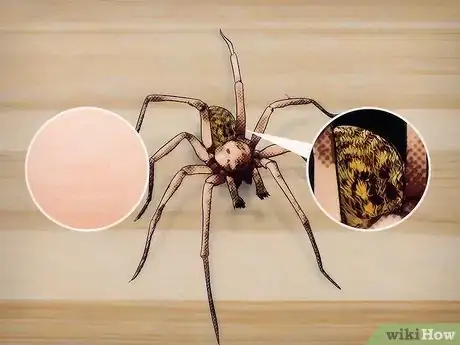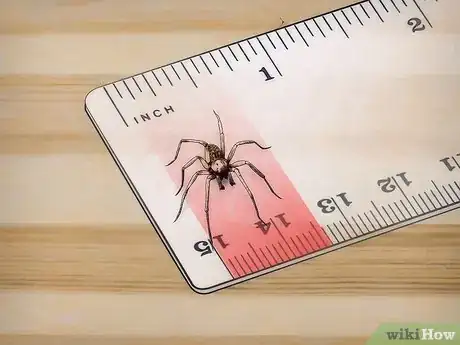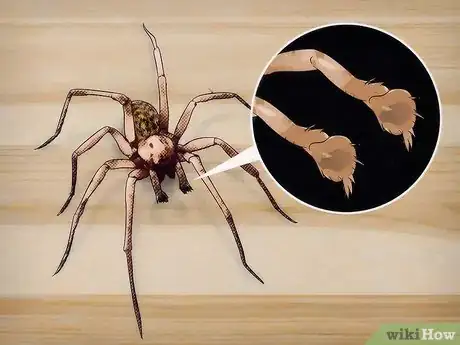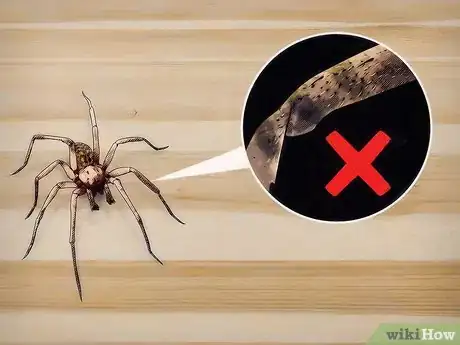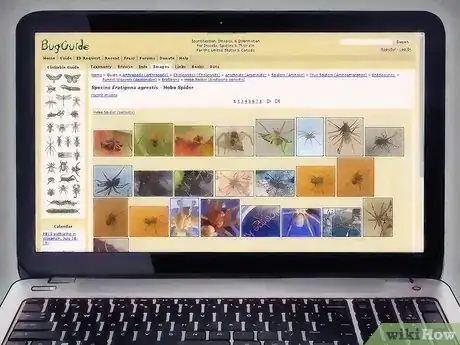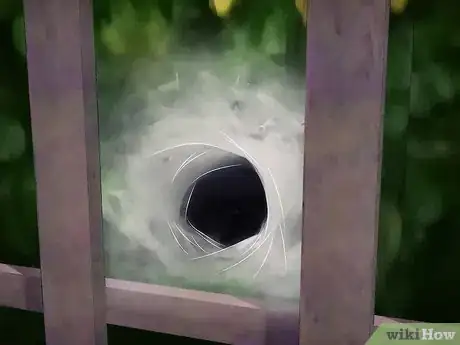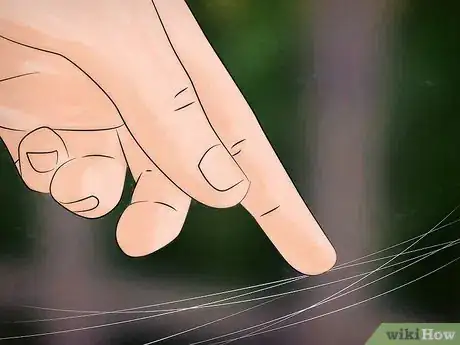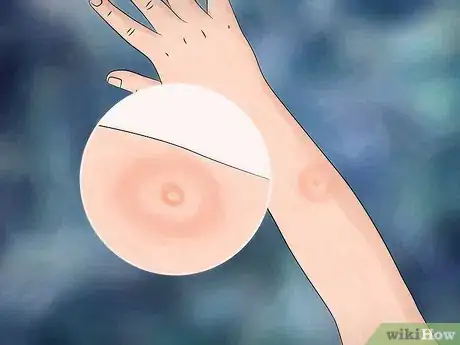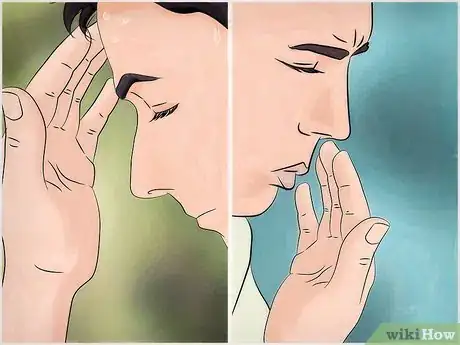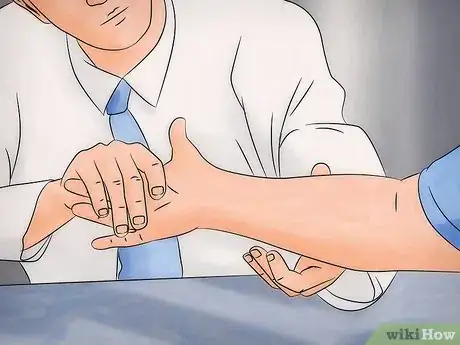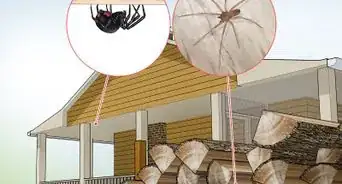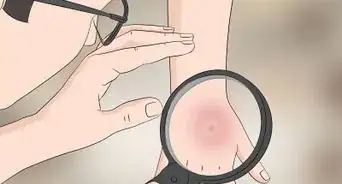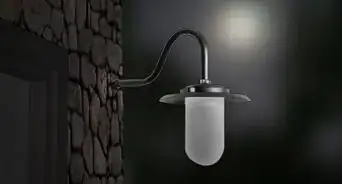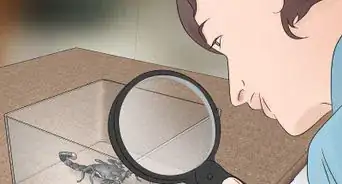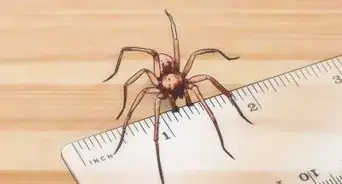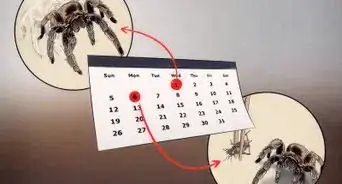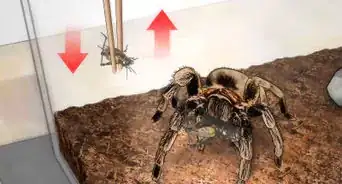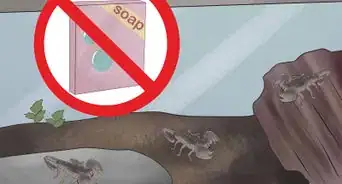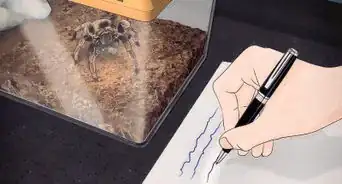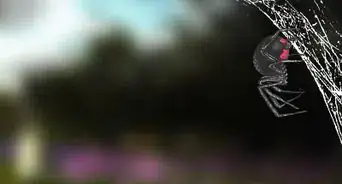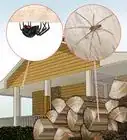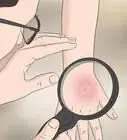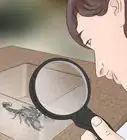This article was co-authored by wikiHow Staff. Our trained team of editors and researchers validate articles for accuracy and comprehensiveness. wikiHow's Content Management Team carefully monitors the work from our editorial staff to ensure that each article is backed by trusted research and meets our high quality standards.
wikiHow marks an article as reader-approved once it receives enough positive feedback. This article received 11 testimonials and 87% of readers who voted found it helpful, earning it our reader-approved status.
This article has been viewed 558,364 times.
Learn more...
The hobo spider, also known as the “aggressive house spider”, was accidentally introduced to the Northwestern United States in the 1980s and can now be found in the Pacific Northwest and parts of Canada.[1] The bite of a hobo spider can be dangerous and serious, leading to health issues and a lesion around the bite area.[2] Hobo spiders are sometimes confused with the brown recluse spider, but you can check the coloring and size of the spider as well as the spider’s web and the spider’s bite to identify the spider correctly.
Steps
Checking the Coloring and Size of the Spider
-
1Check that the spider has a brown body and yellow markings on its abdomen. Hobo spiders have a brown front body, where its legs, also brown, are attached. There are usually darker brown markings on its front body that can be seen if you examine the spider up close. You should also see a pattern of yellow markings on its lower body or abdomen area, though you may need a microscope or a magnifying glass to spot the yellow markings.
-
2Determine the size of the spider. Hobo spiders are often smaller than other spiders. Male hobo spiders can be 7-13.55 mm (9/32 - 9/16 in) long and female hobo spiders can be 9.5-16.5 mm (⅜-⅝ in) long. It may be helpful to compare the spider to a brown recluse spider to see if it appears smaller.
- Hobo spiders also have shorter legs than other spiders, with a leg span of less than two to three inches.[3]
Advertisement -
3Use a magnifying glass or a microscope to examine the spider’s palpi. The more distinguishing features of a hobo spider can be seen better with a magnifying glass or a microscope. The smaller details on the spider’s body can help you determine if you are dealing with a hobo spider.
- Male hobo spiders will have two large palpi, one on each side of their head by their mouth, that may look like boxing gloves under a microscope. These palpi are the male genitalia and may appear swollen. Female hobo spiders also have palpi but they will not appear swollen.[4]
- You should also look for fine, almost clear hairs called plumose setae on the spider’s body. You will need to use a strong hand lens on a microscope to see these hairs. They will lay flat on the spider’s body and be hard to see with the naked eye.
-
4Confirm the spider is not another type of spider. Hobo spiders are often confused with brown recluse spiders and other spiders. However, you can identify several physical markers on the spider to confirm it is a hobo and not another type of spider.
- Check if the spider has spots on its sternum, which is the flat shield like section on the top of the spider, surrounded by its legs. If there are three or four light spots on the sternum, it is not a hobo spider.
- You should also look for two long, distinct stripes on the front part of its body, where its front legs are attached. If there are two long, distinct stripes, the spider is likely not a hobo spider. Hobo spiders have indistinct or diffused patterns on the front section of their bodies.
- Look for any legs that appear shiny, hairless, and dark-orange in color. These are all indications the spider is not a hobo spider.
- Unlike brown recluse spiders, hobo spiders do not have dark bands on their legs or a violin shaped pattern on their heads. Brown recluse spiders also do not have any markings on their abdomen, while hobo spiders do.
Looking at the Spider’s Web
-
1Confirm the web is at ground level. Hobo spiders are not vertical climbers, so they will usually build their webs at ground level or below ground level in basements. If the web is located in a ground level or below ground spot, you may be looking at a hobo spider web.[5]
-
2Check if the web is shaped like a funnel. The hobo spider is a member of the funnel-web spider family. They use their long legs and running abilities to create webs that are funnel or tube shaped.
- These funnel shaped webs may be attached between two stationary objects at ground level, such as two planters or two tree branches. Sometimes, hobo spiders will also create webs under the siding of homes, in basements, and between plants or weeds.
- Unlike hobo spiders, brown recluse spiders do not build webs. So if you notice a funnel shaped web in the spider’s environment, you can rule out classifying the spider as a brown recluse.
-
3Note if the web is not sticky to the touch. Unlike other spiders, hobo spiders create non-sticky webs. The web will trip the prey and the hobo spider will attack the prey before it can escape.
- Hobo spiders have poor eyesight so they tend to be more aggressive to humans than to other spiders. Partly, hobo spiders are aggressive because if they do not attack, they could die of starvation.
Examining the Bite of the Spider
-
1Look for any blistering or open wounds around the bite. Most hobo spider bites feel painless at first. You may notice a small bite that appears red, like a mosquito bite. But within 24 hours, the bite will start to develop into a blister. Within 24-36 hours, the blister will break open, leaving an open, oozing wound. At this point, your body is reacting to the spider’s venom.
-
2Note if you develop a severe headache, nausea, or fatigue. The most common symptoms of a hobo spider bite is a severe headache, nausea, and fatigue. You may also experience temporary memory loss and vision impairment due to the bite. These symptoms will likely occur within 24-36 hours of the bite.[6]
- If the hobo spider bite is not treated, you may have reoccurring side effects due to the poisoning, such as severe headaches, nausea, vomiting, soreness in the bite area, and flu-like symptoms.
-
3Seek medical care if you have a hobo spider bite. If you have been bitten by a hobo spider, you should first clean the wound thoroughly with antiseptic. Show the bite to a doctor so you can get antibiotics and/or a tetanus shot to prevent an infection.[7]
- Most hobo spider bites will scab over within three weeks of the initial bite and leave a permanent scar on your body. If the bite develops in fatty tissue on your body, such as on the inside of your arms or legs, the bite may be very deep and not heal for two to three years.
Community Q&A
-
QuestionI was bit 3 days ago by an unknown. I have severe neck pain and my left arm is weak. There are many bites in back of my head and toward my neck. What should I do?
 Community AnswerGo to a doctor. Based on the bite, your doctor may be able to determine what bit you and what precautions to take.
Community AnswerGo to a doctor. Based on the bite, your doctor may be able to determine what bit you and what precautions to take. -
QuestionWhat if the spider has bands on its legs?
 Community AnswerThe spider is likely not a hobo spider if it has bands or rings on its legs.
Community AnswerThe spider is likely not a hobo spider if it has bands or rings on its legs. -
QuestionCan a hobo spider bite kill a small cat?
 Community AnswerUnlikely, as the common house cat is the only known predator of the hobo spider. Many people will place the cat's litter box in the area where they notice the hobo spiders entering their house (pipes in bathroom, doorway, etc.). Even kittens are able to catch and kill hobo spiders.
Community AnswerUnlikely, as the common house cat is the only known predator of the hobo spider. Many people will place the cat's litter box in the area where they notice the hobo spiders entering their house (pipes in bathroom, doorway, etc.). Even kittens are able to catch and kill hobo spiders.
References
- ↑ http://www.orkin.com/other/spiders/hobo-spiders/
- ↑ http://www.termite.com/spider-identification.html#hobo
- ↑ http://www.spiderbitetreatment.com/hobo-spiders/
- ↑ http://www.termite.com/spider-identification.html#hobo
- ↑ http://www.termite.com/spider-identification.html#hobo
- ↑ http://www.termite.com/spider-identification.html#hobo
- ↑ http://www.spiderbitetreatment.com/hobo-spiders/
About This Article
To identify a hobo spider, start by looking at its size and coloring since hobo spiders average less than 1 inch long with a brown body and legs, and yellow markings on the abdomen. Next, use a magnifying glass to examine the spider’s palpi, which look like 2 large boxing gloves on its head, to see if the palpi are enlarged, as this is a common characteristic of male hobo spiders. Then, check the spider’s web to see if it’s at ground or basement level, is shaped like a funnel, and is not sticky, which are all indications of a hobo spider’s web. For more tips, like how to identify a hobo spider’s bite and prevent an infection, read on!
